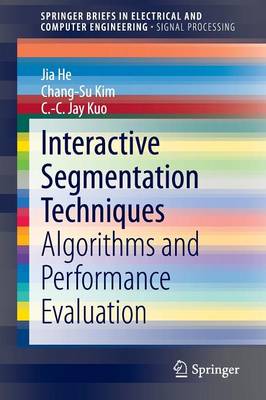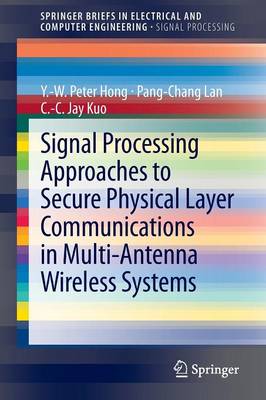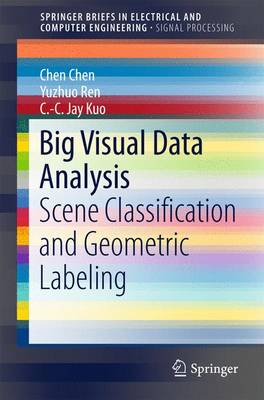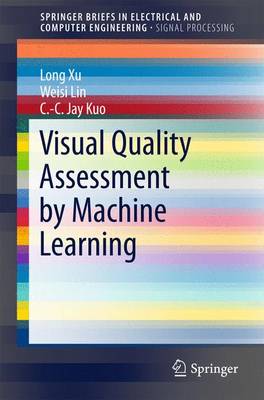SpringerBriefs in Signal Processing
4 total works
Interactive Segmentation Techniques
by Jia He, Chang-Su Kim, and C.-C. Jay Kuo
Published 17 September 2013
This book focuses on interactive segmentation techniques, which have been extensively studied in recent decades. Interactive segmentation emphasizes clear extraction of objects of interest, whose locations are roughly indicated by human interactions based on high level perception. This book will first introduce classic graph-cut segmentation algorithms and then discuss state-of-the-art techniques, including graph matching methods, region merging and label propagation, clustering methods, and segmentation methods based on edge detection. A comparative analysis of these methods will be provided with quantitative and qualitative performance evaluation, which will be illustrated using natural and synthetic images. Also, extensive statistical performance comparisons will be made. Pros and cons of these interactive segmentation methods will be pointed out, and their applications will be discussed.
There have been only a few surveys on interactive segmentation techniques, and those surveys do not cover recent state-of-the art techniques. By providing comprehensive up-to-date survey on the fast developing topic and the performance evaluation, this book can help readers learn interactive segmentation techniques quickly and thoroughly.
There have been only a few surveys on interactive segmentation techniques, and those surveys do not cover recent state-of-the art techniques. By providing comprehensive up-to-date survey on the fast developing topic and the performance evaluation, this book can help readers learn interactive segmentation techniques quickly and thoroughly.
Signal Processing Approaches to Secure Physical Layer Communications in Multi-Antenna Wireless Systems
by Y. W. Peter Hong, Pang-Chang Lan, and C.-C. Jay Kuo
Published 11 October 2013
This book introduces various signal processing approaches to enhance physical layer secrecy in multi-antenna wireless systems. Wireless physical layer secrecy has attracted much attention in recent years due to the broadcast nature of the wireless medium and its inherent vulnerability to eavesdropping. While most articles on physical layer secrecy focus on the information-theoretic aspect, we focus specifically on the signal processing aspects, including beamforming and precoding techniques for data transmission and discriminatory training schemes for channel estimation. The discussions will cover cases with collocated and with distributed antennas, i.e., relays. The topics covered will be of interest to researchers in the signal processing community as well to practitioners and engineers working in this area. This book will also review recent works that apply these signal processing approaches to more advanced wireless systems, such as OFDM systems, multicell systems, cognitive radio, multihop networks etc. This will draw interest from researchers that wish to pursue the topic further in these new directions.
This book is divided into three parts: (i) data transmission, (ii) channel estimation and (iii) advanced applications. Even though many works exist in the literature on these topics, the approaches and perspectives taken were largely diverse. This book provides a more organized and systematic view of these designs and to lay a solid foundation for future work in these areas. Moreover, by presenting the work from a signal processing perspective, this book will also trigger more research interest from the signal processing community and further advance the field of physical layer secrecy along the described directions.
This book allows readers to gain basic understanding of works on physical layer secrecy, knowledge of how signal processing techniques can be applied to this area, and the application of these techniques in advanced wireless applications.
This book is divided into three parts: (i) data transmission, (ii) channel estimation and (iii) advanced applications. Even though many works exist in the literature on these topics, the approaches and perspectives taken were largely diverse. This book provides a more organized and systematic view of these designs and to lay a solid foundation for future work in these areas. Moreover, by presenting the work from a signal processing perspective, this book will also trigger more research interest from the signal processing community and further advance the field of physical layer secrecy along the described directions.
This book allows readers to gain basic understanding of works on physical layer secrecy, knowledge of how signal processing techniques can be applied to this area, and the application of these techniques in advanced wireless applications.
This book offers an overview of traditional big visual data analysis approaches and provides state-of-the-art solutions for several scene comprehension problems, indoor/outdoor classification, outdoor
scene classification, and outdoor scene layout estimation. It is illustrated with numerous natural
and synthetic color images,
and extensive statistical analysis is provided to help readers visualize big visual
data distribution and the associated
problems. Although there
has been some research on big visual data analysis, little work
has been published on big image data distribution analysis using the modern
statistical approach described in this
book. By presenting a complete methodology on big visual data analysis with
three illustrative scene comprehension
problems, it provides a
generic framework that can
be applied to other big visual data analysis tasks.
scene classification, and outdoor scene layout estimation. It is illustrated with numerous natural
and synthetic color images,
and extensive statistical analysis is provided to help readers visualize big visual
data distribution and the associated
problems. Although there
has been some research on big visual data analysis, little work
has been published on big image data distribution analysis using the modern
statistical approach described in this
book. By presenting a complete methodology on big visual data analysis with
three illustrative scene comprehension
problems, it provides a
generic framework that can
be applied to other big visual data analysis tasks.
Visual Quality Assessment by Machine Learning
by Long Xu, Weisi Lin, and C.-C. Jay Kuo
Published 1 January 2015
The book encompasses the state-of-the-art visual quality assessment (VQA) and learning based visual quality assessment (LB-VQA) by providing a comprehensive overview of the existing relevant methods. It delivers the readers the basic knowledge, systematic overview and new development of VQA. It also encompasses the preliminary knowledge of Machine Learning (ML) to VQA tasks and newly developed ML techniques for the purpose. Hence, firstly, it is particularly helpful to the beginner-readers (including research students) to enter into VQA field in general and LB-VQA one in particular. Secondly, new development in VQA and LB-VQA particularly are detailed in this book, which will give peer researchers and engineers new insights in VQA.



